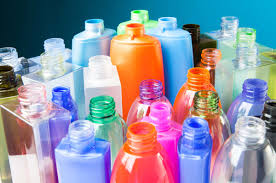 Plastics are a wide range of synthetic or semi-synthetic materials that use polymers as a main ingredient.
Plastics are a wide range of synthetic or semi-synthetic materials that use polymers as a main ingredient.
Plastic products pollute the environment and are harmful to human health
The annual output of plastics has grown from less than 2,000,000 tons in 1950 to approximately 400,000,000 tons today.
Nearly a quarter of the 14,000 tons of waste generated daily by US hospitals is plastic, much of which is single use plastics such as syringes, masks, and gloves.
The US an annual health cost of plastic production and associated chemicals are estimated 250 billion and 920 billion, respectively including expenses, for treating conditions caused by plastic exposure, and societal cost of reduced productivity and diminished quality of life.
This output is expected to double by 2040 and triple by 2060 in the presence of an anticipated decreasing demand for fossil based energy.
Its plasticity makes it possible for plastics to be moulded, extruded or pressed into solid objects of various shapes.
Plastics have contributed advances in every years aspect of medicine and improves lives, immeasurably.
Plastic has a wide range of properties: plasticity lightweight, durable, flexible, and inexpensive to produce.
Most modern plastics are derived from fossil fuel-based chemicals like natural gas or petroleum; however, recent industrial methods use variants made from renewable materials, such as corn or cotton derivatives.
The production, use and disposal of plastics introduced more than 13,000 chemicals into the environment.
Some of plastics released can lead to adverse health outcomes, including infertility, congenital disorders, and increased cancer risk.
98% of plastics are derived from fossil carbon, contributing 3.7% of climate change, causing greenhouse, gas emissions, and similar fractions of toxic air emissions. Fossil fuels – gas, oil, and coal on the main prerequisites of plastics.
The use of disposable, single use items accounts for about 40% of current production and contributes a disproportionate accumulation of plastic waste.
Plastic waste is ubiquitous in the environment.
Plastics everything good breaks down into chemical laden micro plastic and nano plastic particles in the environment.
Fossil carbon based plastics, do not biodegrade, but rather breakdown into micro particles and nano particles that enter organisms through food chains, and the hydrologic cycle.
Plastics are comprised of a polymer matrix plus thousands of chemical additives that impart its properties: color, stability, flexibility, flame resistance, and water repellency.
Plastic fragments do not decompose but form, microplastics, and nanoplastics, which pervade the environment.
Microplastics have been detected in various organ systems, causing oxidated stress, cell damage, and inflammation.
Plastics are laden with harmful chemical, additives, many which act is carcinogens, neurotoxins, and endocrine disruptors, organic pollutants, capable of harming current and future generations.
Endocrine disrupters include: bisphenol, perfluorinated and polychlorinated substances that can disrupt lipid metabolism, and increase the risk of diabetes, stroke, and cardiovascular diseases.
Human exposures occur during every lifecycle phase of plastic, including natural resource extraction, manufacturing, transportation, use, and disposal to the environment.
These chemicals have been shown to leach and disturb the body’s hormone systems, increasing the risk for cancer, diabetes, reproductive disorders, neurological impairments in developing fetuses and children, and even death.
Plastic additive chemicals are present in the bodies of nearly every American.
Plastics have been associated with hepatic, angiosarcoma in individuals exposed to poly vinyl chloride polarization, interstitial, lung disease, increased rates of premature birth, low birthweight, asthma, and pediatric cancers.
In patients who have undergone carotid endarterectomy micro plastics and nanoplastics were detected in 58% of the excised plaques.
The presence of microplastics and nanoplastics in carotid artery plaque, is associated with the subsequent risk of myocardial infarction, non-fatal stroke, or death from any cause that was 2.1 times that in patients whose plaques did not contain microplastics or nanoplastics.
Patients with elevated microplastics or nanoplastics in their plaque also had elevated expression of circulating, inflammatory markers.
People are exposed to microplastics and nanoplastics by means of ingestion and inhalation.
Micro, and nanoplastics, are found in multiple tissues, including: colon, placenta, liver, spleen, and lymph node tissues.
Micro, and nanoplastics Can cause toxic effects at multiple sites, potentially by inducing oxidative stress.
In patients with carotid artery plaque in which micro plastics and nano plastics(MNPs) were detected, had a higher risk of myocardial infarction, stroke, or death from any cause at 34 months of follow up than those in whomMNP’s were not detected (Marfella R).
Leaching from intravenous, enteric,and endotracheal tubing and blood bags can result an entry of chemicals into patients blood streams.
